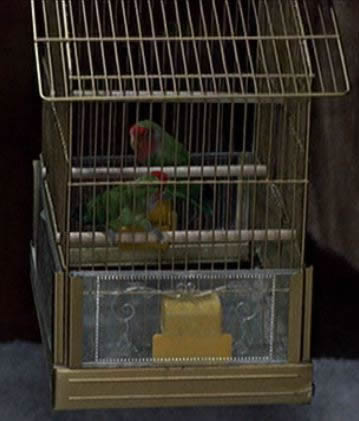Melanie's Coercion by the Birds
The Threat of Diegetic Sound

If the misogynist elements of The Birds are examined at another angle a great deal of meaning can be derived from Hitchcock's use of only diegetic sound in place of a score. There is a strong connection throughout the film between Melanie Daniels and all the birds. This is most apparent in the comparison between Melanie and the lovebirds. Both she and the lovebirds are the same color, green, and, when Melanie bleeds towards the beginning of the film, her face is covered with the same red as the faces of the lovebirds. It is through this connection that the birds can be seen as the threat of changing gender roles that Melanie and Annie represent.

The idea that Melanie has brought this trouble upon Bodega Bay can be supported by the fact that the birds were already present in the very first shots of the movie circling above Union Square. The angry mother in the diner expresses this view explicitly later on in the film saying, "They said when you got here the whole thing started," and later declaring that Melanie is "evil." This interpretation of the birds, as the threat of feminism and shifting gender roles brought to Bodega Bay by Melanie, lends itself particularly well to an explanation of Hitchcock and Bernard Herrmann's use of sound throughout the film. Hitchcock uses only what would be ascribed as diegetic sound. One explanation of this decision could be that Hitchcock wanted to create a situation in which the threat of feminism and the Sexual Revolution was very real and very direct. Most of the noises that are produced on the soundtrack of The Birds are not actually diegetic, but rather were produced on a trautonium, an electronic instrument, and mixed with recorded bird sounds. [18] Thus Hitchcock and Herrmann crafted a soundtrack that uses diegetic noise like a musical score. In that light, the film takes on a more documentary style approach. There is no music to sway the viewer emotionally, only what appears to be natural bird noises. Thus the viewer is tricked into believing that the film is somehow more real because of its dependence on diegetic sound.